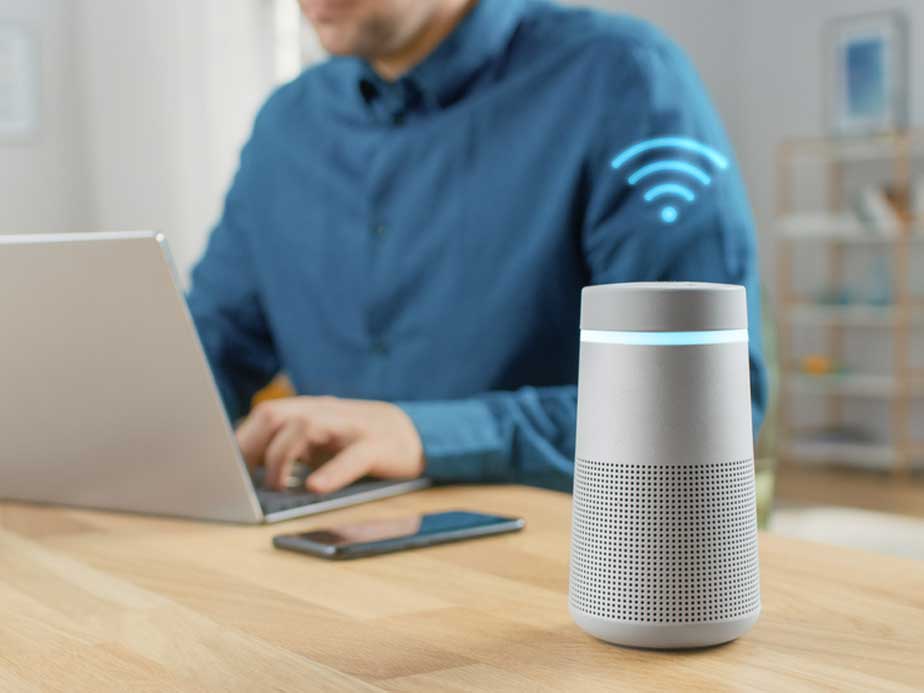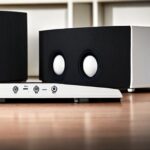To connect a computer to a Bluetooth speaker, open the Bluetooth settings on your computer and add the speaker as a Bluetooth device. Then, select the speaker from the list to establish the connection.
We will discuss the different methods you can use to connect a computer to a Bluetooth speaker, including using the built-in Bluetooth feature, using an adapter or AUX cable, and using a Bluetooth app for PC. Additionally, we will provide steps to troubleshoot any issues you may encounter during the connection process.
By following these steps, you can easily enjoy wireless audio from your computer through a Bluetooth speaker.
Table of Contents
Checking Bluetooth Compatibility
When it comes to connecting your computer to a Bluetooth speaker, it’s crucial to ensure compatibility before attempting the connection. This will save you time and frustration, as well as ensure a seamless pairing experience.
Verifying if Computer Has Built-in Bluetooth Feature
If you are unsure whether your computer has a built-in Bluetooth feature, you can easily check by following these steps:
- From your Windows search bar, type in “Device Manager” and click it to open.
- Scroll down the devices list and look for “Bluetooth.” If you see it, then congratulations! Your computer has the technology installed.
Confirming Computer’s Bluetooth Version
It’s important to confirm the Bluetooth version supported by your computer to ensure compatibility with your Bluetooth speaker. To check the Bluetooth version, you can take the following steps:
- Open the “Device Manager” by typing it in the Windows search bar and clicking on it.
- Scroll down to “Bluetooth” in the devices list and right-click on it.
- Select “Properties” from the drop-down menu.
- In the Properties window, navigate to the “Advanced” tab.
- Under “Manufacturer,” check the “Bluetooth Version” information. This will indicate the Bluetooth version supported by your computer.
Checking Bluetooth Adapter Compatibility
If your computer doesn’t have a built-in Bluetooth feature or if the version is not compatible with your Bluetooth speaker, you can use a Bluetooth adapter to establish the connection. Here’s how to determine if your Bluetooth adapter is compatible:
- Check the specifications of your Bluetooth speaker to determine the required Bluetooth version.
- Research and select a Bluetooth adapter that supports the required Bluetooth version. Make sure it is compatible with your computer’s operating system.
- Once you’ve obtained the Bluetooth adapter, insert it into an available USB port on your computer.
- Ensure that your computer recognizes the Bluetooth adapter by checking the “Device Manager.”
- If the Bluetooth adapter is recognized, you should see it listed under the “Bluetooth” category.
By verifying if your computer has a built-in Bluetooth feature, confirming the Bluetooth version, and checking Bluetooth adapter compatibility, you can ensure a successful connection between your computer and Bluetooth speaker. Enjoy the wireless convenience and enhanced audio experience that Bluetooth technology offers!
Connecting Bluetooth Speaker To Computer
In this blog post, we will guide you through the process of connecting your Bluetooth speaker to your computer. Whether your computer has a built-in Bluetooth feature or not, we have solutions for you.
Connecting Bluetooth Speaker to Computer with Built-in Bluetooth Feature
If your computer has a built-in Bluetooth feature, the pairing process is quite straightforward. Follow these steps:
- Ensure that your Bluetooth speaker is in pairing mode. This can usually be done by pressing and holding the Bluetooth pairing button on the speaker.
- On your computer, navigate to the Bluetooth settings.
- Click on the option to add a new Bluetooth device.
- In the list of available devices, select your Bluetooth speaker.
- Wait for the computer and the speaker to establish a connection. Once connected, you can start using your Bluetooth speaker with your computer.
Pairing Bluetooth Speaker with Computer
If you encounter any issues during the pairing process, there are a few troubleshooting steps you can try:
- Make sure that both your computer and Bluetooth speaker are fully charged.
- Ensure that your Bluetooth speaker is within range of your computer.
- Turn off any other Bluetooth devices nearby that might be causing interference.
- Restart both your computer and Bluetooth speaker.
- Reset the Bluetooth settings on your computer and try pairing again.
Connecting Bluetooth Speaker to Computer without Built-in Bluetooth Feature
If your computer does not have a built-in Bluetooth feature, you can still connect your Bluetooth speaker using alternative methods.
Using a Bluetooth Adapter
A Bluetooth adapter is a small device that can be plugged into your computer’s USB port, enabling it to connect with Bluetooth devices. Here’s how you can use a Bluetooth adapter to connect your speaker:
- Purchase a Bluetooth adapter that is compatible with your computer.
- Plug the Bluetooth adapter into an available USB port on your computer.
- Follow the instructions provided with the adapter to install any necessary drivers or software.
- Put your Bluetooth speaker into pairing mode.
- On your computer, navigate to the Bluetooth settings and add a new Bluetooth device.
- Select your Bluetooth speaker from the list of available devices.
- Wait for the connection to be established, and then start using your Bluetooth speaker with your computer.
Connecting via AUX Cable
If your Bluetooth speaker has an AUX port, you can connect it to your computer using an AUX cable. Here’s how:
- Ensure that your speaker has an available AUX port.
- Connect one end of the AUX cable to the AUX port on your speaker and the other end to the headphone jack on your computer.
- Configure your computer’s audio settings to recognize the AUX input.
- Start playing audio on your computer, and it will be transmitted through your Bluetooth speaker.
Using a Bluetooth App
There are also Bluetooth apps available that can help you connect your Bluetooth speaker to your computer. These apps usually require both your computer and speaker to be connected to the same Wi-Fi network. Follow the instructions provided with the app to establish the connection.
By following these steps, you can easily connect your Bluetooth speaker to your computer, whether it has a built-in Bluetooth feature or not. Enjoy the convenience of wirelessly streaming audio from your computer to your speaker.
How To Connect Bluetooth Speaker To Pc Windows 11
Troubleshooting Bluetooth Connection Issues
When connecting your computer to a Bluetooth speaker, you may encounter various connection issues that can disrupt your audio experience. In this section, we will discuss common problems that users face and provide troubleshooting steps to resolve these issues effectively.
Common Connection Problems
Here are some common issues you may encounter when trying to connect your computer to a Bluetooth speaker:
- Pairing failure
- Audio lag or stuttering
- No sound from the speaker
Interference Issues
Interference can disrupt the Bluetooth signal, leading to connection problems. Common sources of interference include:
- Other Bluetooth devices
- Wireless routers
- Electrical devices
To minimize interference, keep your Bluetooth speaker and computer away from these potential sources of disturbance.
Outdated Drivers
Outdated Bluetooth drivers can cause connection issues. Ensure that your computer has the latest drivers installed for a seamless Bluetooth experience.
Compatibility Issues
Compatibility issues between your computer and Bluetooth speaker can also hinder a successful connection. Ensure that your computer’s Bluetooth technology is compatible with the speaker you are trying to connect.
Troubleshooting Steps
Here are some troubleshooting steps you can take to fix Bluetooth connection issues:
- Restarting Devices:
Restarting both your computer and Bluetooth speaker can help reset the connection and resolve minor issues.
- Updating and Reinstalling Drivers:
Ensure that you have the latest Bluetooth drivers installed on your computer. If necessary, you can uninstall the existing drivers and reinstall them for a fresh start.
- Resetting Bluetooth Settings:
If all else fails, you can try resetting your computer’s Bluetooth settings. This can help clear any incorrect configurations that may be causing the connection problems.
By following these troubleshooting steps, you should be able to resolve common Bluetooth connection issues between your computer and speaker. Enjoy uninterrupted audio playback and make the most out of your Bluetooth speaker.

Credit: www.bestcheck.in
Frequently Asked Questions For Connect Computer To Bluetooth Speaker
Why Can’T I Connect My Bluetooth Speaker To My Computer?
To connect your Bluetooth speaker to your computer, make sure your computer has built-in Bluetooth or use a USB Bluetooth adapter. Turn on your speaker and put it in discoverable mode. On your computer, open Bluetooth settings, select your speaker from the list, and pair them.
How Do I Connect My Speaker To My Computer?
To connect your speaker to your computer, follow these steps: 1. Make sure your computer has Bluetooth capability. 2. Turn on Bluetooth on your computer. 3. Activate the discoverable mode on your speaker. 4. On your computer, go to Bluetooth settings and search for available devices.
5. Select your speaker from the list of available devices. 6. Follow any on-screen instructions to complete the pairing process. 7. Once connected, you can start playing audio through your speaker.
How Do I Know If My Computer Has Bluetooth?
To check if your computer has Bluetooth, follow these steps: 1. Type “Device Manager” in the Windows search bar and open it. 2. Scroll down the device list and look for “Bluetooth. ” 3. If you see “Bluetooth” listed, your computer has the technology installed.
Can You Connect A Bluetooth Speaker To A Computer With Usb?
Yes, you can connect a Bluetooth speaker to a computer using a USB connection.
Conclusion
Connecting your computer to a Bluetooth speaker is a simple and convenient way to enhance your audio experience. By following the steps outlined in this blog post, you can easily pair your devices and enjoy wireless sound. Whether your computer has built-in Bluetooth capabilities or requires the use of an adapter, there are options available for every setup.
Additionally, if your speaker does not have Bluetooth capabilities, you can still connect it to your computer using an AUX cable or a Bluetooth transmitter. Remember to check your computer’s Bluetooth settings and ensure that both devices are in pairing mode.
With the ability to connect your computer to a Bluetooth speaker, you can enjoy high-quality audio for music, movies, and more. So go ahead and elevate your sound experience by connecting your computer to a Bluetooth speaker today.

Williams Kane is a blogger and writer. He’s passionate about writing and connecting with the community, especially when it comes to sharing his ideas through writing.
I am a versatile author with a passion for exploring a wide range of topics on our multi-niche website. With a background in research and a love for writing, I bring a unique blend of expertise to our platform.
My journey began in the world of science, where I earned a degree in biology and developed a deep fascination for the natural world. This background enables me to delve into topics related to ecology, environmental conservation, and the wonders of the animal kingdom.
However, my curiosity knows no bounds, and I have ventured into various other niches as well. From technology trends and digital innovations to health and wellness tips, I strive to provide well-researched and engaging content that informs and entertains our diverse audience.
Furthermore, my dedication to staying current with the latest developments in each niche ensures that our readers receive up-to-date and reliable information. Whether it’s deciphering complex scientific concepts or simplifying tech jargon, I take pride in making complex subjects accessible to all.
Join me on our multi-niche journey, where we explore the depths of knowledge and share insights on a multitude of topics to inspire, educate, and entertain.




